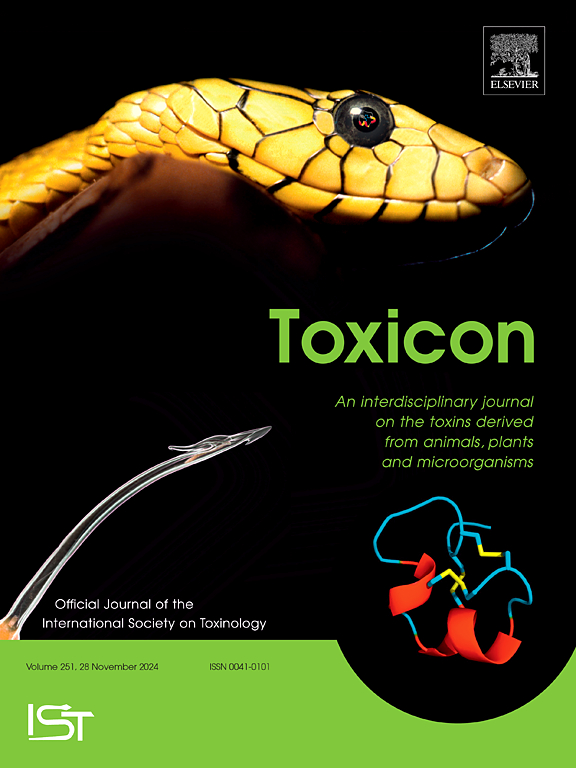Determination of Grayanotoxin-III amount in the rhododendron honey and flowers samples using UHPLC-Orbitrap®-HRMS
IF 2.6
4区 医学
Q2 PHARMACOLOGY & PHARMACY
引用次数: 0
Abstract
Grayanotoxins (GTXs) are naturally occurring toxins with diterpenoid structures, predominantly found in species of Rhododendron, and are responsible for food poisoning associated with honey, commonly referred to as mad honey. The Black Sea region, known for its rich Rhododendron species, is also the geographical area with the highest incidence of honey poisoning cases globally. In this study, the concentration of GTX-III was quantified in the honey and Rhododendron flower samples collected from the Black Sea region. An Ultra High Performance Liquid Chromatography-Orbitrap®-High Resolution Mass Spectrometry (UHPLC-Orbitrap®-HRMS) analytical method was validated for the precise measurement of GTX-III isomers in both honey and flower matrices. The GTX-III concentrations ranged from 0 to 6.59 mg/g in honey and 33.57–44.99 mg/g in flowers. Additionally, the concentration of GTX-III in honey was found to correlate with the density of Rhododendron pollen present in the honey. The study confirmed that the UHPLC-Orbitrap®-HRMS method is a reliable and sensitive tool for the accurate quantification of GTX-III. Using this sensitive and reliable method, the precise concentration of GTX-III in mad honey can be accurately determined; however, honey samples from case study samples are required for further investigation.

求助全文
约1分钟内获得全文
求助全文
来源期刊

Toxicon
医学-毒理学
CiteScore
4.80
自引率
10.70%
发文量
358
审稿时长
68 days
期刊介绍:
Toxicon has an open access mirror Toxicon: X, sharing the same aims and scope, editorial team, submission system and rigorous peer review. An introductory offer Toxicon: X - full waiver of the Open Access fee.
Toxicon''s "aims and scope" are to publish:
-articles containing the results of original research on problems related to toxins derived from animals, plants and microorganisms
-papers on novel findings related to the chemical, pharmacological, toxicological, and immunological properties of natural toxins
-molecular biological studies of toxins and other genes from poisonous and venomous organisms that advance understanding of the role or function of toxins
-clinical observations on poisoning and envenoming where a new therapeutic principle has been proposed or a decidedly superior clinical result has been obtained.
-material on the use of toxins as tools in studying biological processes and material on subjects related to venom and antivenom problems.
-articles on the translational application of toxins, for example as drugs and insecticides
-epidemiological studies on envenoming or poisoning, so long as they highlight a previously unrecognised medical problem or provide insight into the prevention or medical treatment of envenoming or poisoning. Retrospective surveys of hospital records, especially those lacking species identification, will not be considered for publication. Properly designed prospective community-based surveys are strongly encouraged.
-articles describing well-known activities of venoms, such as antibacterial, anticancer, and analgesic activities of arachnid venoms, without any attempt to define the mechanism of action or purify the active component, will not be considered for publication in Toxicon.
-review articles on problems related to toxinology.
To encourage the exchange of ideas, sections of the journal may be devoted to Short Communications, Letters to the Editor and activities of the affiliated societies.
 求助内容:
求助内容: 应助结果提醒方式:
应助结果提醒方式:


